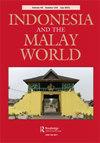Following Arab Saints
IF 0.9
3区 社会学
0 ASIAN STUDIES
引用次数: 2
Abstract
ABSTRACT Most studies on Muslim youth in post-New Order Indonesia have concentrated on those who are affiliated with global Islamist movements. Such studies overlook another spectrum of Muslim youth, those who engage with traditionalist Muslim groups. This article analyses the growing popularity of Hadhrami Arab preachers among urban Muslim youth in contemporary Indonesia. The preachers who claim descent from the Prophet are popularly called habib (sing.) or habaib (pl.). Inheriting holy blood from the Prophet, habaib have enjoyed a special status and respect among Indonesian Muslims, especially traditionalist ones. This study focuses on the late Habib Munzir al-Musawa and his sermon group (majelis taklim), the Majelis Rasulullah (The Prophet’s Assembly), as well as his young followers in Jakarta. The Majelis Rasulullah is arguably the most popular sermon group in Indonesia and has attracted tens of thousands of people to its public preaching events. Seeking to explain its popularity, this study considers the views and experiences of Habib Munzir’s young followers concerning their participation and activism within the group. It explores both structural and cultural factors that drive urban Muslim youths to participate in the sermon group. Borrowing Bayat’s perspective on Muslim youth and leisure, the paper argues that Indonesian Muslims participate in the habaib sermon groups not only for spiritual shelter but also because they see them as sites where they can express both their piety and their ‘youthfulness’ in the midst of uncertainty, discontent, and limited spaces for expressing themselves in Jakarta.追随阿拉伯圣徒
大多数关于后新秩序印尼穆斯林青年的研究都集中在那些与全球伊斯兰运动有关联的人身上。这样的研究忽视了穆斯林青年的另一个群体,即那些参与传统穆斯林团体的人。本文分析了哈达拉米阿拉伯传教士在当代印度尼西亚城市穆斯林青年中的日益流行。那些声称自己是先知后裔的传教士通常被称为habib(歌唱)或habaib (pl.)。哈巴布继承了先知的圣血,在印尼穆斯林中享有特殊的地位和尊重,尤其是传统主义者。本研究的重点是已故的Habib Munzir al-Musawa和他的布道团体(majelis taklim), majelis Rasulullah(先知大会),以及他在雅加达的年轻追随者。Majelis Rasulullah可以说是印度尼西亚最受欢迎的布道团体,吸引了成千上万的人参加其公开布道活动。为了解释它的受欢迎程度,本研究考虑了Habib Munzir的年轻追随者对他们在组织中的参与和行动主义的看法和经历。它探讨了驱动城市穆斯林青年参加布道小组的结构和文化因素。借用Bayat对穆斯林青年和休闲的观点,文章认为印尼穆斯林参加habaib布道团体不仅是为了寻求精神庇护,也是因为他们将其视为在雅加达不确定、不满和表达自我空间有限的情况下表达虔诚和“年轻”的场所。
本文章由计算机程序翻译,如有差异,请以英文原文为准。
求助全文
约1分钟内获得全文
求助全文
来源期刊

Indonesia and the Malay World
ASIAN STUDIES-
CiteScore
2.00
自引率
0.00%
发文量
17
期刊介绍:
Indonesia and the Malay World is a peer-reviewed journal that is committed to the publication of scholarship in the arts and humanities on maritime Southeast Asia. It particularly focuses on the study of the languages, literatures, art, archaeology, history, religion, anthropology, performing arts, cinema and tourism of the region. In addition to welcoming individual articles, it also publishes special issues focusing on a particular theme or region. The journal is published three times a year, in March, July, and November.
 求助内容:
求助内容: 应助结果提醒方式:
应助结果提醒方式:


